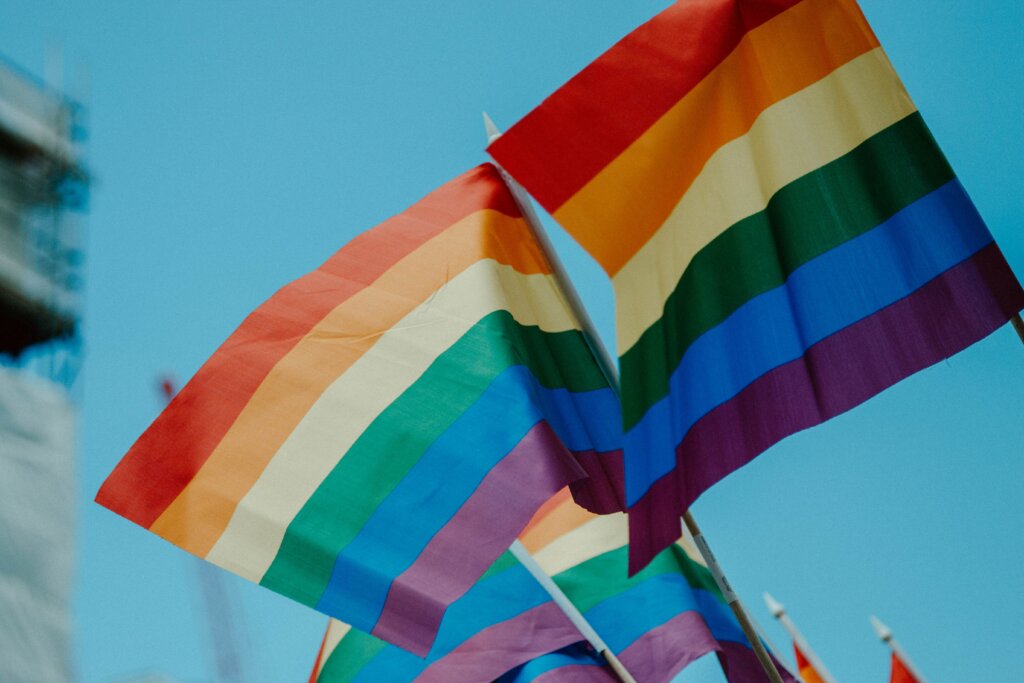
How to help your LGBTQ+ child stay safe on TikTok
To commemorate LGBTQ+ History Month, here is our walkthrough for parents and carers about how they can help their child safely navigate to an enjoyable experience on TikTok.
TikTok is a great platform for LGBTQ+ youth to celebrate and explore their culture and identities. It can feel validating for a young person who may be questioning themselves and in search of an open and accepting community.
There are some useful safety features and tools which you can use to ensure your child has a safe and enjoyable experience navigating the app, no matter how they identify.
For broader advice about online issues, check out the UK Safer Internet Centre’s advice about online challenges and social media.
Open and honest conversation

TikTok has been widely praised by the LGBTQ+ community for providing a validating space, with filters and trends sparking conversation on social media.
If your child finds that they have identified with LGBTQ+ content on TikTok that they haven’t come across before, then empathising with them as their parent or carer and engaging with the content alongside them will have a positive impact on their confidence and mental health.
This is why it’s helpful to take a genuine interest in their use of TikTok (and wider use of social media and the internet) – to help them navigate that content. This may also make them more likely to approach you if they happen to come across worrying content online, or look to you first for sensible advice for any questions they may have.
Fact-busting the “dangers” of TikTok
Public comment sections are a default on TikTok posts, so as with any space where users can share their opinions freely there will be the potential for trolls, bigotry, and online hate.
We always suggest that young people have private accounts on social media. If they do come across harmful content, it is important that they know how to report that user and block them. For more top tips on handling social media challenges, head to our webpage.
Notably, TikTok outlined significant steps in their community guidelines to help diminish anti-LGBTQ+ content. More types of harmful content, such as videos that promote conversion therapy or deny an individual’s identity, are now officially anti-LGBTQ+ content.
This means that such content will not be picked up by TikTok’s For You page algorithm, helping to stamp out the dissemination of online hate towards the LGBTQ+ community.
“At TikTok, we believe people should be able to express themselves creatively and be entertained in a safe, secure, and welcoming environment. Our Community Guidelines support that by establishing a set of norms so that people understand what kinds of content to create on our platform and viewers know what to report to us.”
Their ability to remove harmful content is backed up by the stats – 95.1% of all harmful videos in the third quarter of 2021 were removed before a user had even reported it, and 88.8% had been removed before a single user had even seen it, according to their community guidelines. You can see their full report here.
How else can I ensure my child is safe on TikTok?
Family Pairing is a useful in-app setting which ensures safe TikTok browsing. Enabling this links your account to your child’s and will grant you access to their privacy settings, which cannot be changed without your password. Have a look at TikTok’s super helpful walkthrough video on using Family Pairing.
Security measures include “Restricted Mode”, which will filter out all adult content. You can also stop other users from commenting on your child’s videos .
There is also an option to make your child’s account undiscoverable. You may also want to toggle the settings to make sure that any videos that your child has downloaded to their device are automatically sent to you as well.
Notably, it’s important to respect your child’s right to privacy as they get older. If they feel like they’re being too closely monitored, they might begin to be more secretive about their online use or find alternative ways to access content. They may also be more reluctant to come and speak to you if they face an issue.
No one knows your child more than yourself, so approach them the way you know best to foster that trust.
Enhanced privacy settings to safeguard your child
Around 7.26 million accounts have recently been removed due to underage usage.
The default privacy setting for all registered accounts for those aged 13-15 is “private”. This means that their account will not be recommended for other accounts to follow, and their videos will not be able to be viewed or reacted to by any account that does not follow them
If Family Pairing is not enabled, your child can switch off the “private” setting, so it may be worth talking to them about the benefits of keeping their account on private.

